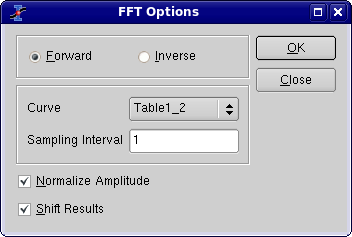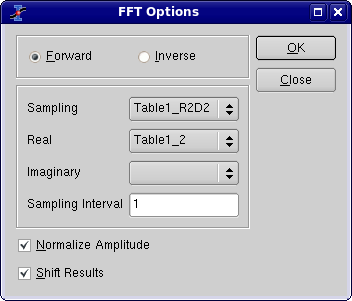Fast Fourier Transform
The FFT... dialog box can be used either on a table or on a plot. It is used to compute a direct or inverse FFT. See the FFT section in the Analysis chapter for an example.
SciDAVis will create a new plot window with the FFT amplitude curve, and a new table which contains the real part, the imaginary part, the amplitude, and the angle of the FFT.
If the Normalize Amplitude check box is on, the amplitude curve is normalized to 1. If the Shift Results check box is on, the frequencies are shifted in order to obtain a centered x-scale.
In the case of a table, you must select the sampling column (X-values) and two columns for Y-values. If they are complex numbers, the first column is the real part of Y-values and the second is the imaginary part. If Y-values are simple reals, you must select the same column for real and imaginary part.
By default, the Sampling Interval corresponds to the interval between X-values. Giving a smaller value makes no sense, but you can increase this value in order to sample less values

